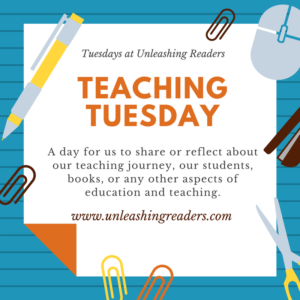Teachers, I have a secret to tell you. Come closer…. clooooser…
CLOSE READING ISN’T ANYTHING NEW!
Phew! It is so good to get that off my chest.
My district has been focusing on close reading this year through a District Professional Learning Community, and this is something I’ve realized the more I learn about close reading.
Before I continue, let me define close reading as I see it:
- Close reading has to happen with a short piece of complex text.
- Complex text is defined as any text where you are having students critically think. It DOES NOT mean only Lexile. Even Common Core who started this specific terminology states that you need to look at different components of the text as well as the task being completed and the reader completing the task. Almost any text can be complex.
- Texts are inclusive of visuals, music, multimedia, and anything else that can be analyzed.
- Close reading then has the reader look at the same text multiple times to help them get a deeper understanding of the text.
- Each read (or view) of the text should have a different purpose with the final read ending in a final task.
- The final task is standards-based task.
And let’s clear up some some misconceptions of close reading:
- A whole novel should never be close read.
- So if we label a novel as “Close Read/Analysis” that means we feel there are aspects of the novel that could be pulled out to used for a close read, not the whole novel.
- Close reading doesn’t need to take multiple days.
- It just depends on the text, task, and readers.
- Close reading can be done with independent reading.
- A complex task can be given that can be applied to multiple texts.
- Close reading doesn’t have to kill the fun or love of a text.
- My students actually like close reading (in small doses) because it makes them feel like they understand the text better and better. Think about when you read a poem multiple times with a teacher until you finally “get it.” That is how my students feel about close reading.
- It can only be done with an article or poem.
- It is done with every piece of music that a musician gets. It is done with athletes when they watch game tape to analyze their playing. It is done when looking at artwork to truly understand its meaning. It is done every time a student breaks down a math word problem to truly understand what it is asking. And these are just a few examples.
- It is only for English class.
- See above ^
- Close reading should be done every day.
- Oh man, no! Please. That’ll just completely kill it. Close reading, in my opinion, is for the end of a unit as you get to a standards-based final task. However, that is not the only time it can be used.
That’s it. Close reading is something that if you are teaching students to think deeply about a text with a focus on one task or standard, you’re already having students close read. It is just a name for this best practice.
Now, is close reading important? Absolutely! Should teachers consciously plan close reads? Definitely! But should students hate it and teachers avoid it? NO! If this is happening, then some close reading remediation needs to happen because without close reading, in my opinion, students are not deeply thinking about text.
Please continue being the kick butt teachers you are without the fear of the term close reading!


2 thoughts on “A Secret About Close Reading”